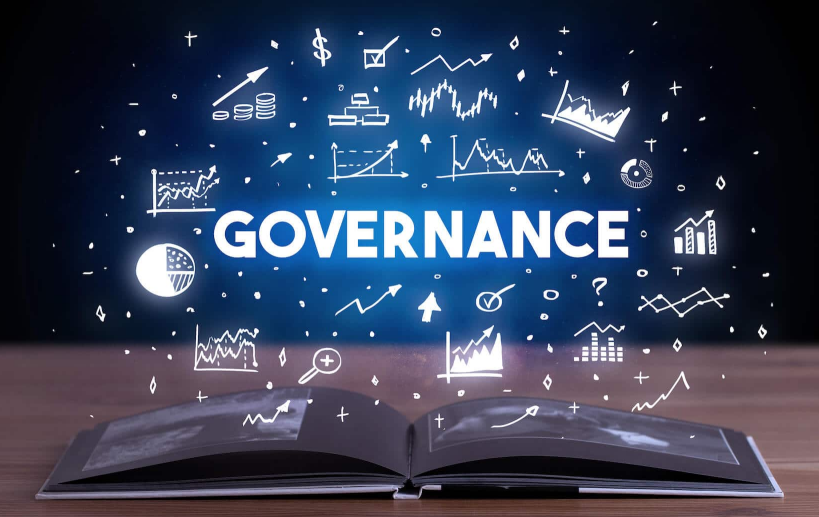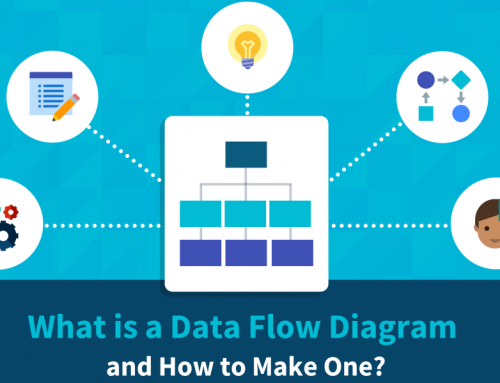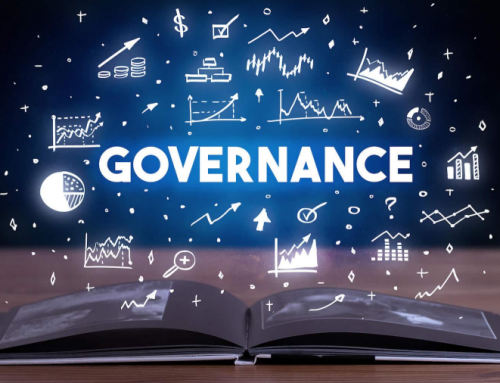How to Succeed in Data Governance?
In this article, we’ll explore how to succeed in data governance. If you’ve worked with large amounts of data, you’ve probably heard the term “data governance” and you’ve probably wondered, what is it? Is it right for you? How to implement? Simply put, data governance is the strategy for handling data – how it is stored, accessed, verified, secured and used. Data governance includes developing access schemes: who can access, use and share your data.
These issues are becoming increasingly important as businesses rely on the collection, storage and analysis of large amounts of data to achieve their business goals. Data has become an enterprise’s profit tool, business medium and trade secret. Data breaches can lead to legal battles and can cause consumers to lose confidence in a company’s core business.

How to Succeed in Data Governance?
If you leave it to the individual departments to process the data, you will lack a unified strategy for managing the data, and may leave it to the individual departments to develop their own strategies. This is unthinkable, as is the lack of a strategy for managing physical inventories, allowing individual entities to produce, store and sell products at will. Misuse of data, like misuse of inventory, can cost businesses millions of dollars, so strategies must be in place to make data consistent, secure and readily available. These policies applied to the data domain constitute data governance.
Features of Data Governance
A data governance strategy must cover the entire lifecycle of data, from data collection all the way to data stewardship. During this lifecycle, data governance must address the following issues:
1. Where to get the data and how to get it, this is the starting point of the data life cycle. Data provenance determines the foundation of a data governance strategy. For example, an important factor in determining the source of the data is the size of the dataset. Is data collected from target markets, existing customers and social media? Or use an outside vendor to collect data or analyze the data you collect? What is the input data stream? Data governance must address these issues, develop strategies to manage the collection of data, guide external providers to process the data they collect or analyze the data you collect, and control the path and lifecycle of the data.
2. Validating data, especially multi-source data, is a headache for data stewards. Distinguishing important data from noisy data is only the beginning of the problem. If you are collecting data from an affiliated business, you must ensure that the data is reliable. If you’re collecting data from social media sites, in your strategy, there must be a way to verify important data. In any case, you must ensure that the data collected is legitimate and has not been tampered with – this issue is especially worrying in parallel computing environments, where parallel computing is often used to collect large amounts of data, often using cloud services , thus increasing the security risk.
3. Data governance policies must address storage issues, and storage solutions depend largely on the size of data sets. Petabytes of big data must be stored in secure, redundant systems, often using hierarchies that provide data based on frequency of use. In this way, expensive online systems provide data that is frequently requested, while less frequently requested data is stored on less expensive and less available systems. Unfortunately, these lower-priority systems can also be less secure, allowing access to sensitive but infrequently requested data. Therefore, when formulating a data storage solution, a good data governance policy must consider all aspects.
4. Data governance must develop an access control strategy that strikes a balance between needs and security. Make data accessible when necessary to those who need it to do their jobs. For security reasons, they should not be able to access data beyond their authority. Data should only be accessed under the premise of legitimate requests, but for security reasons, access to sensitive data should be made more difficult and only open to users with a specific security level.
Access levels should be set for users and the data itself, and close interaction with HR and Purchasing should be important when managing accounts, as this allows departing employees and discontinued suppliers to no longer have access in a timely manner. Handling these details and ensuring data ownership and accountability form part of a complete data governance strategy.
5. Use/Share/Analyze. How data is used is a critical part of a data governance strategy. Potential uses include using the data to manage accounts, improve customer experience, deliver targeted advertising, provide market analysis, and share data with affiliated businesses. What data can be shared or used for marketing must be carefully defined and protected from attacks and leaks, as data is meant to be used purely for internal purposes. Let customers know that all companies collecting data must comply with data usage and sharing regulations. Being able to ensure data usage is compliant is another important benefit of having a data governance policy.
6. Collection, verification, storage, access, and use are all necessary components of a security plan, and there must be a comprehensive strategy to address these and other security concerns. A security program must function without prohibiting users, but data life-cycle stages can be attacked and compromised through inadvertence. The pursuit of safety must support rather than hinder necessary use. A data governance strategy must develop data security solutions, including access protocols, encryption of data at rest and in transit, and more.
7. Stewardship/Metadata. The data lifecycle is incomplete without stewardship. An example of stewardship is the application of metadata to a piece of data to identify retrieval. Metadata includes the source of the data, the date it was generated and/or collected, access level information, semantic classification, and other attributes required by the enterprise. Data governance establishes a metadata vocabulary that defines the validity period of data. Keep in mind that data also expires, and at some point, may only be used for historical data analysis.
Organizational Issues of Data Governance
The creation of data governance is often met with resistance from those who fear they will no longer be able to access the data they need, and from those who are historically reluctant to share their data for competitive reasons. A data governance strategy must address these concerns and be acceptable to all parties. Companies accustomed to a data silo environment may not easily adapt to new data governance strategies, but today’s reliance on large data sets and the many security issues that come with them make creating and implementing company-wide data policies a necessity.
Data is increasingly part of an enterprise’s infrastructure, and decisions are made as the enterprise processes specific situations step by step. It is done on a one-off basis, often in response to a particular problem. As a result, the way an enterprise handles data can change from department to department, or even from department to department.
Even if each department already has a reasonable plan for processing data, these plans may conflict with each other and the enterprise will have to find a way to mediate. Figuring out the requirements and needs of data storage can be difficult, and if you don’t do it right, you can’t realize the potential of data for marketing and customer retention, and you also have legal liability if there is a data breach.
Another problem is that in a large company, departments compete for resources and compete to have their needs heard. Departments only need to ensure their own viability, whether it is a profitable business or a support centre, so they have a narrow vision and focus on their own needs, making it difficult to reach a compromise without mediation.
The Data Governance Board creates data governance policies based on existing data policies, unmet needs, and potential security issues, standardizing policies for data collection, management, storage, access, and use, and taking into account the different needs of different departments and positions. The Data Governance Board also acts as a mediator, balancing conflicting needs, reconciling security concerns with access needs, and ensuring the most efficient and secure data management policies.
How to Succeed in Data Governance?
How to Succeed in Data Governance – 1. Establish a data governance organization.
The Data Governance Institute recommends the establishment of a data governance board that evaluates input from individual data users and establishes a company-wide data management strategy that addresses the needs of internal, external, and even legal users. The board should include stakeholders from all areas of the business to ensure that all needs are met and all types of data ownership are represented. Security experts should also be part of the committee. It is important to know what the goals of the data governance board are, so think about why your organization needs a data governance strategy and explain it clearly.
How to Succeed in Data Governance – 2. Develop a framework that accommodates a wide range of data requirements.
The framework must ensure that the pieces are integrated into a whole that meets collection, storage, retrieval, and security requirements. To do this, an enterprise must clearly state its end-to-end data strategy in order to design a framework that covers all requirements and necessary operations. The pieces must be planned together to support each other, which has many benefits, such as performing retrieval requirements in a highly secure environment.
Compliance also needs to be specifically designed as part of the framework so that regulatory issues can be tracked and reported. The framework also includes daily records and other security measures that give early warning of attacks. Validating data before using it is also part of the framework. The Data Governance Board should understand each part of the framework, clarify its purpose, and how it functions throughout the life cycle of the data.
How to Succeed in Data Governance – 3. Pilot a data strategy.
Typically, a strategy should be rolled out on a small scale to uncover flaws in planning, framework and infrastructure before being implemented across the company.
How to Succeed in Data Governance – 4. Have an up-to-date data governance organization.
The Data Governance Board should move with the times, as data governance policies will certainly need to be adjusted as they expand into new business areas. Moreover, as technology evolves, so should data policies, keeping pace with security situations, data analysis methods, and data management tools.
How to Succeed in Data Governance – 5. Know what a successful data strategy is.
Establish success metrics so that progress can be measured. Setting data management goals will help you identify important indicators of success and, in turn, ensure that your data governance strategy is moving in the direction you want and need.
Conclusion
Thank you for reading our article, and we hope it helps you better understand how to succeed in data governance. If you want to learn more about data governance, we would like to advise you to visit Gudu SQLFlow for more information.
As one of the best data lineage tools available on the market today, Gudu SQLFlow can not only analyze SQL script files, obtain data lineage, and perform visual display, but also allow users to provide data lineage in CSV format and perform visual display. (Published by Ryan on Jul 24, 2022)
If you enjoy reading this, then, please explore our other articles below:



